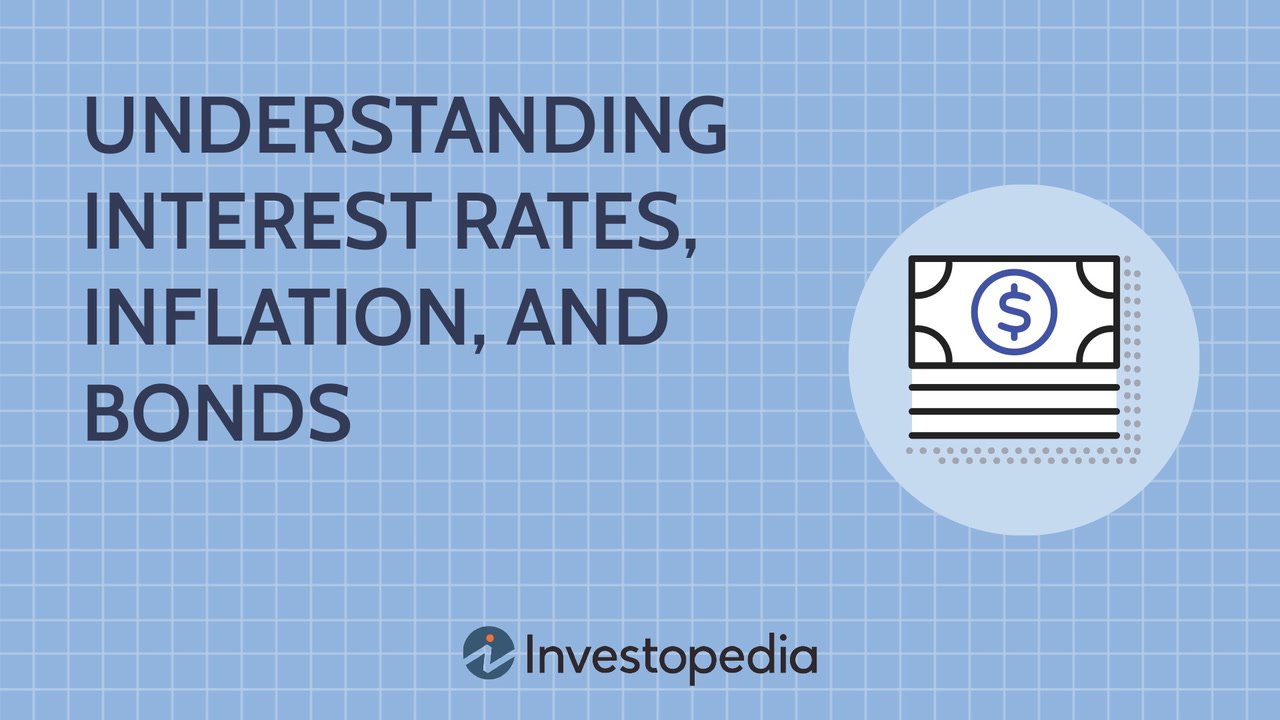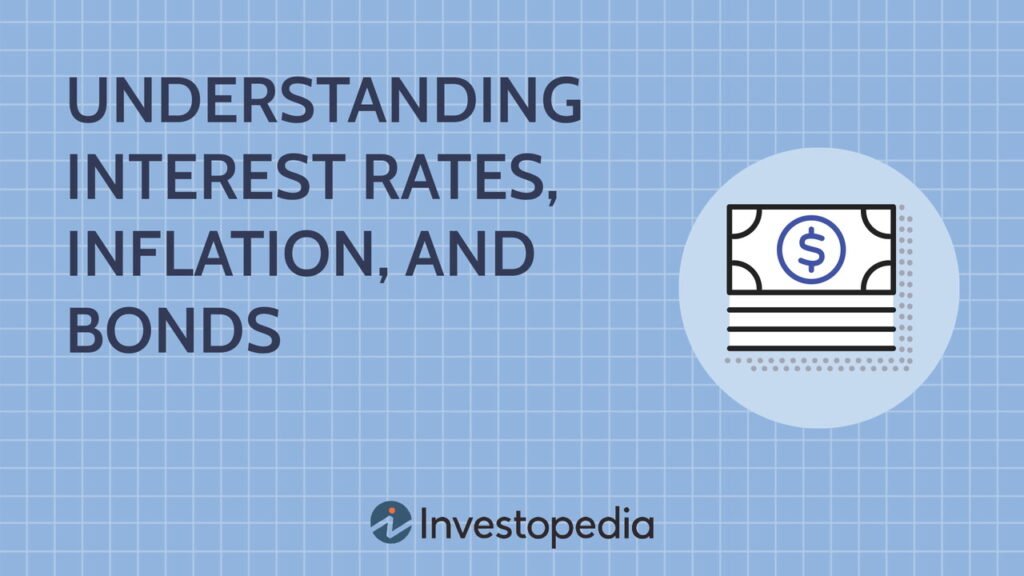
Understanding Bond Pricing and Yield: A Comprehensive Guide

Investing in bonds can be an effective way to generate income and diversify your portfolio, but understanding how bonds work is crucial for making informed investment decisions. Bonds essentially represent a promise from the issuer to make a series of future cash payments, typically consisting of regular interest (coupon) payments, followed by the return of the principal when the bond matures. The value of these payments, however, is influenced by several factors, including inflation expectations and prevailing interest rates.
This guide will break down the key aspects of bond pricing, bond yield, and how inflation and interest rates affect bond values.
Key Takeaways:
- Bonds are highly sensitive to interest rates: When interest rates rise, bond prices typically fall, and conversely, when interest rates fall, bond prices rise.
- Interest rates are closely tied to inflation: Central banks often raise interest rates to combat inflation, which has a direct impact on bond prices.
- Inflation erodes the real value of bonds: Inflation reduces the purchasing power of the cash flows received from bonds, particularly affecting long-term bonds.
- Bond prices react sharply to shifts in inflation and interest rate expectations: A change in inflation expectations can have an immediate and significant impact on the price of a bond.
How Bond Pricing Works
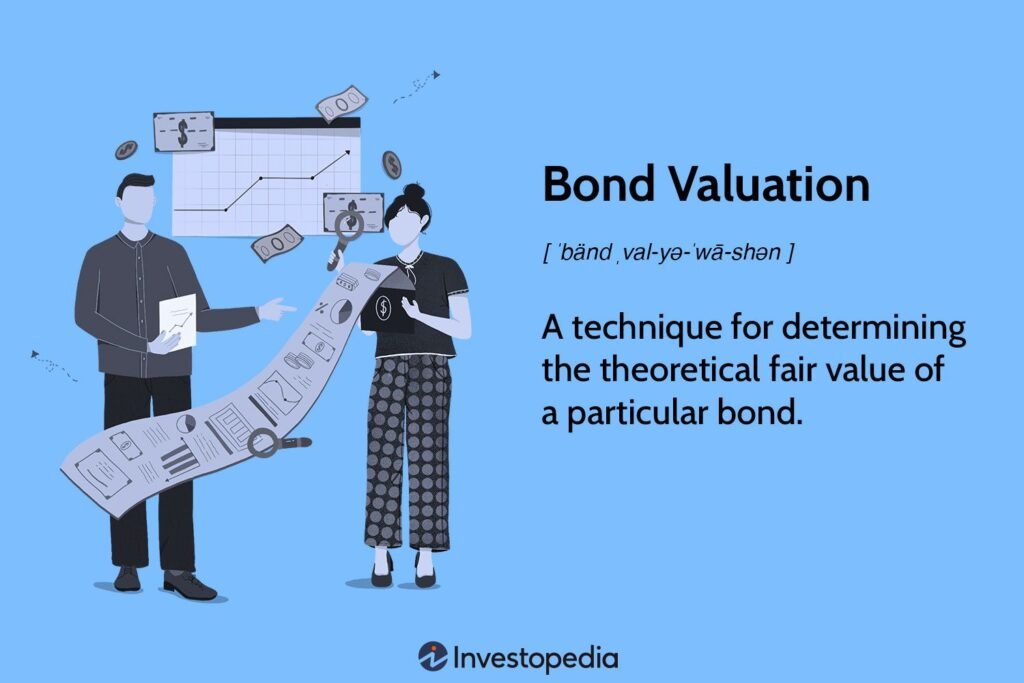
Bond pricing refers to the determination of the present value of a bond’s future cash flows, which include both the regular interest payments and the principal repayment. The price of a bond is influenced by the relationship between the bond’s coupon rate and the prevailing market interest rates.
- Coupon Rate: This is the interest rate that the bond issuer agrees to pay bondholders annually or semi-annually. The coupon rate is fixed, but the bond price fluctuates based on market conditions.
- Market Interest Rates: Bond prices are inversely related to market interest rates. When interest rates rise, newly issued bonds offer higher returns, which makes older bonds with lower coupon rates less attractive. As a result, the price of existing bonds falls.
- Discounted Cash Flow: The price of a bond is calculated by discounting its future cash flows (coupon payments and principal repayment) back to the present using the market’s current interest rates. The higher the interest rates, the lower the bond price, and vice versa.
Understanding Bond Yield
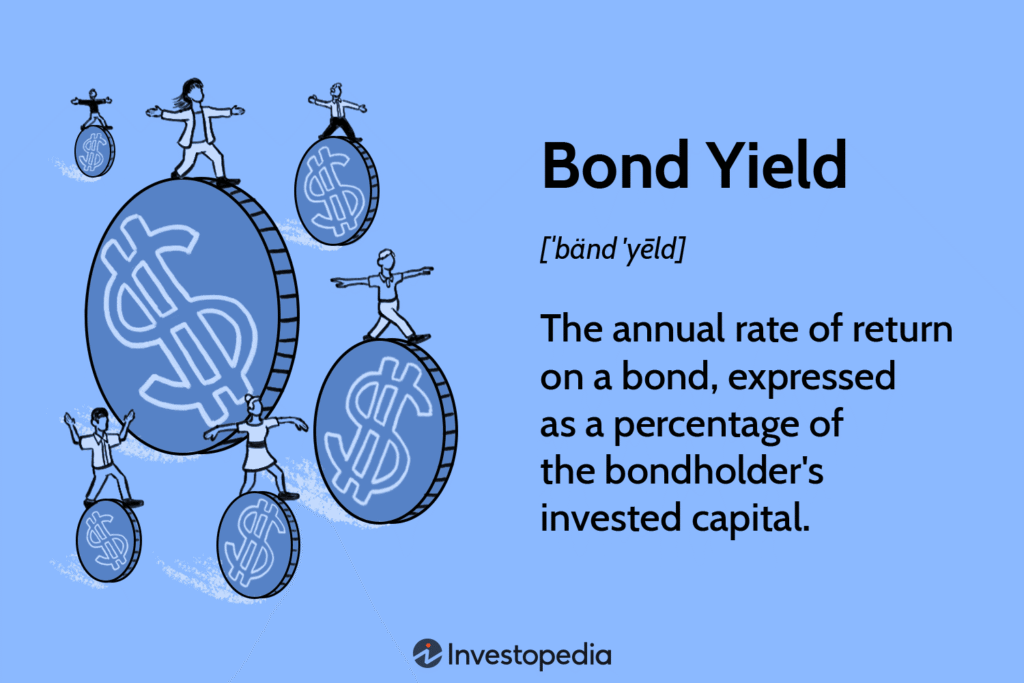
Bond yield is a key measure for investors because it represents the return they can expect to earn from holding a bond until maturity. There are different types of yield metrics used in bond markets:
- Current Yield: This is calculated by dividing the bond’s annual coupon payment by its current price. It provides a snapshot of the return based on the bond’s market price. Current Yield=Annual Coupon PaymentBond Price\text{Current Yield} = \frac{\text{Annual Coupon Payment}}{\text{Bond Price}}
- Yield to Maturity (YTM): This is the total return an investor can expect if the bond is held until it matures. YTM takes into account the bond’s current price, coupon payments, and the difference between the price paid and the face value of the bond.
- Yield to Call (YTC): For callable bonds (which can be redeemed by the issuer before maturity), YTC reflects the return assuming the bond is called before its maturity date.
- Yield to Worst (YTW): This represents the lowest yield an investor can receive if the bond is called or matures early, and it’s useful for assessing risk.
The yield gives investors a sense of the bond’s return relative to its price and the prevailing interest rates.
Inflation’s Impact on Bond Pricing and Yield
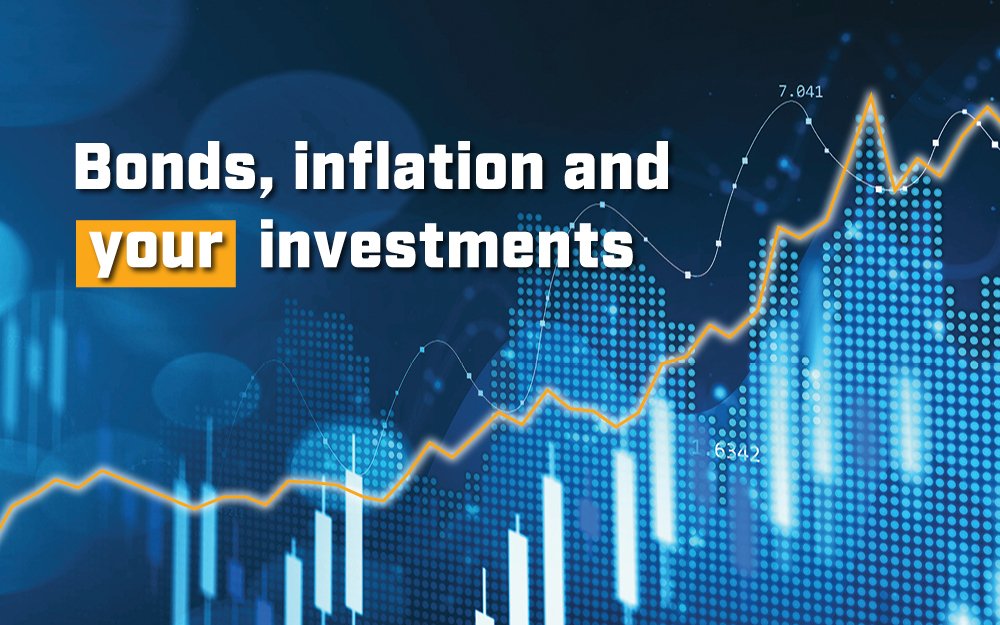
Inflation diminishes the purchasing power of a bond’s future payments. Over time, as inflation increases, the real value of the bond’s interest payments and principal repayment decreases. This can make long-term bonds particularly vulnerable, as their fixed payments become less valuable in an inflationary environment.
- Long-Term Bonds: The longer the bond’s maturity, the greater the impact of inflation on its real value. For instance, a 10-year bond purchased today may have relatively attractive coupon payments, but if inflation rises significantly during the bond’s life, those future payments will lose value in real terms.
- Inflation-Protected Bonds: To mitigate the risk of inflation, investors can look at inflation-protected securities, such as Treasury Inflation-Protected Securities (TIPS), which adjust the bond’s principal value in response to changes in inflation.
Interest Rates and Bond Pricing: The Inverse Relationship

The most significant driver of bond price movements is changes in interest rates. When interest rates rise, newly issued bonds offer higher yields, making older bonds with lower coupon rates less attractive. As a result, the price of existing bonds falls to align their yields with those of new issues.
- Rising Interest Rates: When interest rates rise, the present value of a bond’s future cash flows decreases, leading to a drop in the bond’s price. This is especially pronounced for long-term bonds, as they are exposed to more interest rate risk over their extended lifespan.
- Falling Interest Rates: Conversely, when interest rates fall, the present value of a bond’s cash flows increases, causing its price to rise. This makes existing bonds with higher coupon rates more attractive relative to newly issued bonds with lower rates.
The duration of a bond—how sensitive its price is to changes in interest rates—plays a critical role in determining its price volatility. Bonds with longer durations are more sensitive to interest rate changes than bonds with shorter durations.
The Risks You Should Know About

Investing in bonds, while generally considered safer than stocks, comes with its own set of risks. Understanding these risks is essential for managing a well-balanced bond portfolio:
- Interest Rate Risk: This is the risk that the value of a bond will decline due to changes in market interest rates. Interest rate risk is higher for long-term bonds, which are more sensitive to rate changes.
- Credit Risk: This is the risk that the bond issuer will default on its payment obligations, either on interest or principal. Bonds issued by corporations carry a higher credit risk than those issued by government entities. The creditworthiness of a bond issuer is assessed by rating agencies, with AAA-rated bonds being considered the safest.
- Reinvestment Risk: This risk arises when interest rates fall, and investors are unable to reinvest the bond’s coupon payments at a comparable yield. This can affect the overall return of a bond investment.
- Inflation Risk: As discussed earlier, inflation erodes the purchasing power of the bond’s fixed payments, making it a risk for long-term bondholders.
Bonds vs. U.S. Treasury Bonds: What’s the Difference?

While bonds can be issued by corporations, municipalities, or the federal government, U.S. Treasury bonds are backed by the U.S. government and are considered the safest bond investment. Treasury bonds, bills, and notes are free from credit risk, as the U.S. government is highly unlikely to default on its debt obligations.
- U.S. Treasury Bonds: These long-term bonds are issued by the U.S. government with maturities of 10 years or more. They offer a fixed interest rate and are seen as a benchmark for other bond prices.
- Credit Risk in Corporate Bonds: Corporate bonds, in contrast, carry a higher credit risk, as companies may be more likely to default on their debt obligations compared to the U.S. government. However, they tend to offer higher yields to compensate for this additional risk.
Conclusion: Mastering Bond Pricing and Yield
Understanding bond pricing and yield is key to making informed investment decisions. Bonds are influenced by market interest rates, inflation, and credit risk. By grasping the interplay between these factors, you can better assess the value of bonds and make more strategic investment choices. Whether you’re considering U.S. Treasury bonds for their safety or looking at corporate bonds for higher yields, knowing how bond prices and yields react to economic conditions will help you build a more robust, diversified portfolio.
